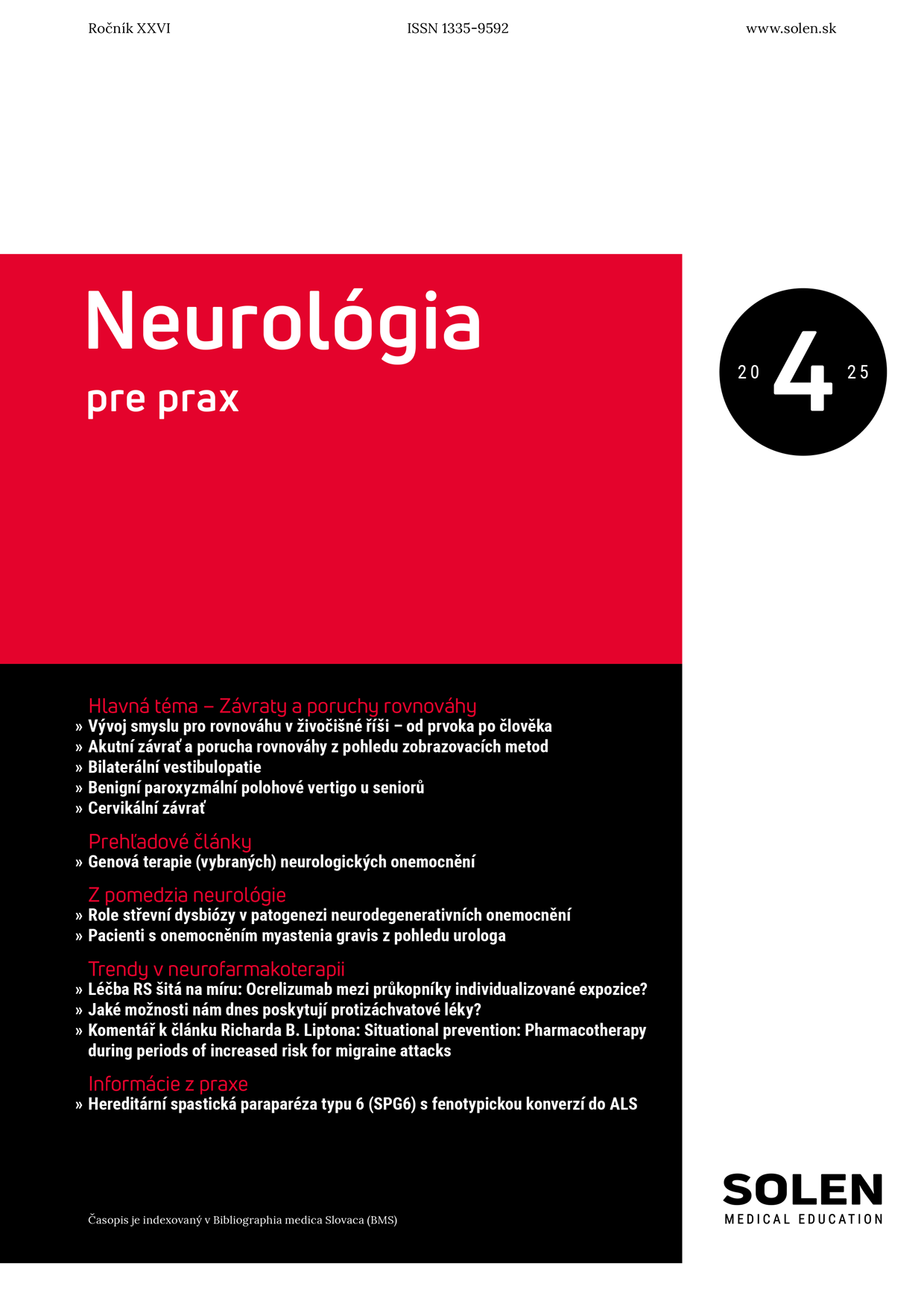Neurológia pre prax 1/2012
Persistent migraine aura without infarction
Persistent aura without infarction (PAWI) is among rare complications of migraine. The diagnostic criteria include: a history of attacks of migraine with aura; an aura persisting for more than one week; and a neuroradiological examination failing to demonstrate migrainous infarction. The most common symptoms of aura are visual and may persist for months or years. The differential diagnostic process involves ruling out complications of migraine (migrainous infarction, status migrainous) as well as some eye diseases (such as vitreous opacities), visual hallucinations in psychiatric diseases, hallucinogen persisting perception disorders and some other rarer causes. An effective treatment for PAWI is not known; acetazolamide, valproic acid and topiramate are recommended. The author reports two interesting cases of migraineurs with chronic visual aura. A 29-year-old woman has had migraine with aura since puberty. In July 2010, she developed a persistent visual disturbance characterized by visual snow – speckling, combined with flashing and colour effects. A 22-year-old man with occasional migraine with aura (visual, sensory and dysphasic) has suffered since early childhood from a persistent visual disturbance characterized by speckling, when "the outside world is seen as if behind this veil". The condition is accompanied by symptoms of depersonalization and derealization. Both patients were evaluated thoroughly. Ophthalmological examination, CT, MRI, EEG, CSF and laboratory tests, psychological and psychiatric examinations were mostly negative. Permanent visual problems significantly complicate the life in both our patients. Repetitive transcranial magnetic stimulation appears to be a promising method for affecting persistent visual aura caused by visual cortex hyperexcitability.
Keywords: migraine with aura, migraine complications, persistent aura without infarction, visual snow.

















